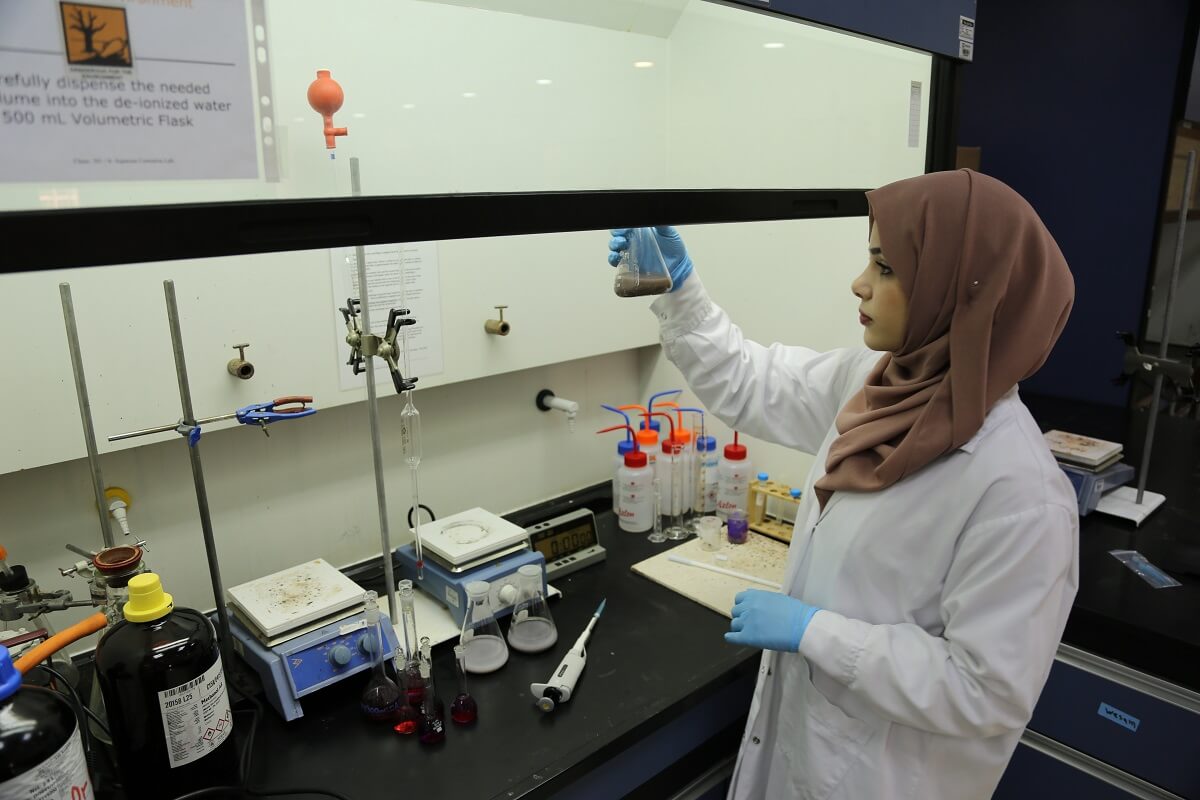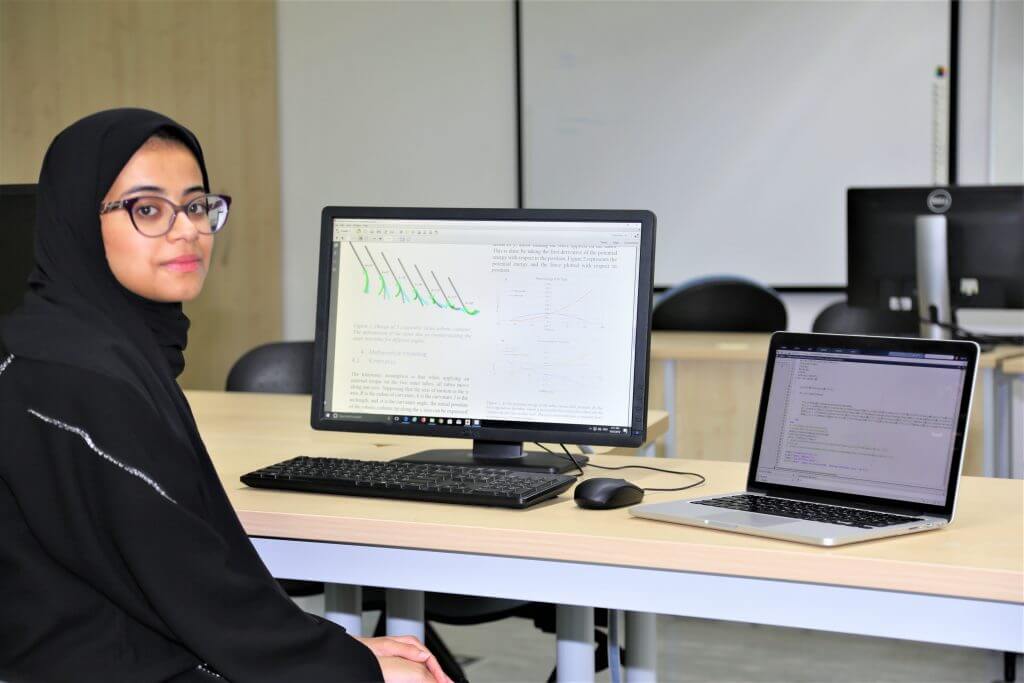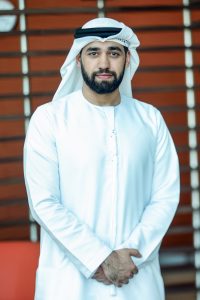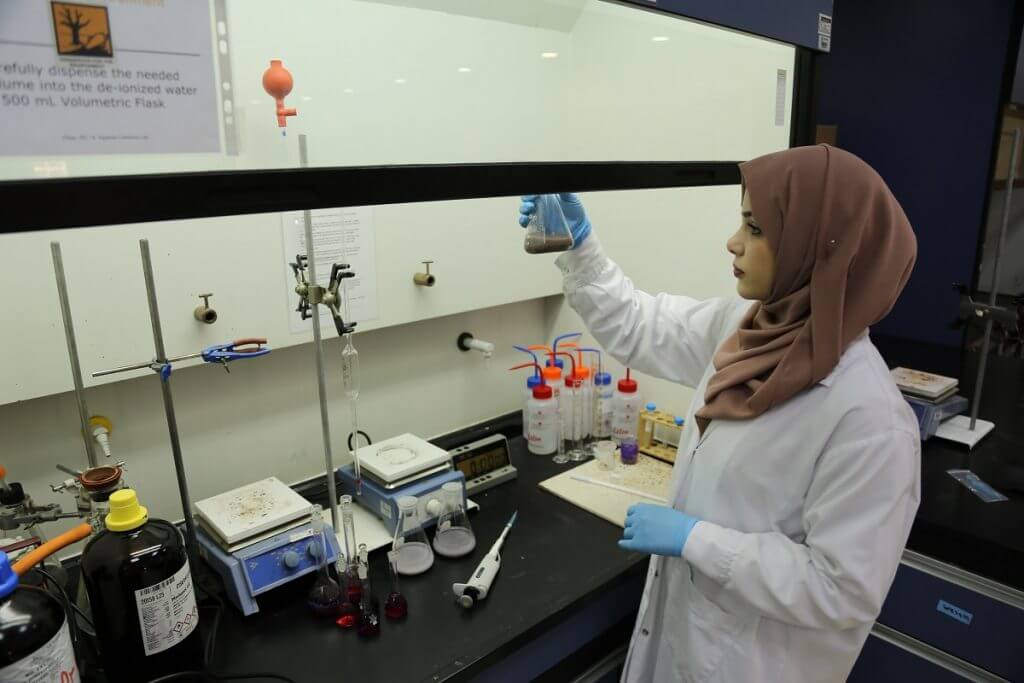
Undergraduate alumni from Khalifa University have myriad opportunities ahead of them, from fulfilling careers to using their education to give back to their communities. Further study is also an option, with many students returning to the university to pursue their academic interests to higher summits, and investigate some of the most pressing science and technology challenges of our time.
With postgraduate admissions open at Khalifa University until October 2019, current students enrolled in Masters and PhD courses share their experiences and research projects here.
Getting to the heart of the problem
Heart disease remains a health concern for UAE residents, as the high prevalence of obesity, diabetes, high cholesterol and increasing stress levels contributes to greater strain on the hearts of the nation. Cardiologists also warn of the blood thickening that can occur during long periods spent in the heat; with Emirati nationals more prone to cardiovascular diseases, life in the desert poses a certain risk to the population here. Many of the at-risk residents will require heart surgery at some point. Hessa Alfalahi, studying for her MSc in Biomedical Engineering, recognized that while minimally invasive cardiac surgeries (MICS) are performed as a safer alternative to traditional open-heart surgeries in many cases, the robotic catheter systems developed to assist in this surgery suffer from control uncertainty—the forces and torques applied at the proximal end of the catheter are not purely and smoothly transmitted to the distal end. This can lead to catheter positioning errors and even tissue damage, while the lack of force control makes reaching certain sites difficult.

Alfalahi’s research involves designing a concentric tube robotic catheter with “zero” stiffness, thought to be the optimal solution to the engineering design problem seen in conventional robotic catheter systems. Her solution will see constant contact force between the catheter tip and the cardiac wall regardless of its displacement, achieving a synchronized motion with the rhythmic beating of the heart.
Cardiac catheterization is a procedure used to diagnose and treat many heart problems, with one major limitation to the surgical technique being the inability to manually manipulate the catheter to follow the high-speed motion of the heart. Alfalahi’s innovative solution could see heart surgeries become safer and easier for patients in the UAE and around the world.
“Here at KU, we are not taught to be typical engineers—we are taught to be leaders and to take part in the technological revolution within the region,” said Alfalahi. “KU offers a motivating environment for students interested in research, especially with the establishment of several research centers. The diversity of research projects proposed in different engineering and scientific disciplines, the excellent supervision from our faculty, and the availability of research laboratories and other facilities have all encouraged me to pursue my postgraduate studies at KU.”
Reaching the great ‘out-there’
From internal surgery to exploring the outer regions of our solar system, Adham Alkhaja, PhD student in Aerospace Engineering, is taking his research interests off-world and designing spacecraft trajectories to explore the giant planets. The outer planets—Jupiter, Saturn, Uranus and Neptune—are particularly interesting in terms of what they can reveal about the origin and evolution of the solar system. They are also local analogs for the many extra-solar planets that have been detected over the past twenty years.
 The problem with exploring them? They’re very far away. Getting a spacecraft to Jupiter or Saturn can be achieved, but once the spacecraft is in orbit around the planet, the major challenge is to identify fuel- and time-efficient strategies for an exploration tour. Being so far from the sun, the solar radiation needed for electrical power generation is scarce and the communication link needed with the scientists back on Earth adds further geometrical and time constraints to trajectory and maneuver design. Alkhaja’s project builds upon state-of-the-art solutions in this field and uses the most advanced astrodynamics tools to further our understanding of our own solar neighborhood and provide the foundations for understanding distant planetary systems.
The problem with exploring them? They’re very far away. Getting a spacecraft to Jupiter or Saturn can be achieved, but once the spacecraft is in orbit around the planet, the major challenge is to identify fuel- and time-efficient strategies for an exploration tour. Being so far from the sun, the solar radiation needed for electrical power generation is scarce and the communication link needed with the scientists back on Earth adds further geometrical and time constraints to trajectory and maneuver design. Alkhaja’s project builds upon state-of-the-art solutions in this field and uses the most advanced astrodynamics tools to further our understanding of our own solar neighborhood and provide the foundations for understanding distant planetary systems.
“Space has always been my passion and studying at Khalifa University has brought my passion to life,” said Alkhaja. “It has given me the opportunity to work with professionals on a project that addresses critical issues in spacecraft mission design. Also, the courses are led by experts who explain the latest developments in the field while sharing their practical experiences from the industry; this has given me the full picture and prepared me to start contributing to the field. I am grateful for all the tools this university has provided and how it has prepared me to contribute to the UAE space workforce.”
Serving the nation and protecting the planet
Back on planet Earth, Hebah Sami, Msc student in Applied Chemistry, is working on protecting the environment and human life with her project, capturing hydrogen sulfide from Claus tail gas. The Claus process recovers elemental sulfur from the gaseous hydrogen sulfide found in raw natural gas and from the by-product gases derived from refining crude oil. The Claus tail gas is the gas produced in a refinery and not required for any further processing, meaning most of the sulfur has already been recovered. However, even the small amount of sulfur compounds remaining in the tail gas needs removing.
 Hydrogen sulfide is one of the major environmental pollutants, with many industrial sectors focused on controlling and monitoring the concentration of hydrogen sulfide in the environment—as little as tens of parts per million may cause severe health problems in humans and at high concentrations leads to death. Hydrogen sulfide also undergoes a chemical reaction to form sulfuric acid, which is highly corrosive and responsible for damaging metallic parts like tanks and pipes in various industries. Sami’s project investigates the interaction and adsorption of hydrogen sulfide gas on nanoparticles to aid in the removal of hydrogen sulfide from Claus tail gas in the UAE. Her research is of such interest to the nation that her project to synthesis a hybrid material for the removal of hydrogen sulfide is sponsored by ADNOC.
Hydrogen sulfide is one of the major environmental pollutants, with many industrial sectors focused on controlling and monitoring the concentration of hydrogen sulfide in the environment—as little as tens of parts per million may cause severe health problems in humans and at high concentrations leads to death. Hydrogen sulfide also undergoes a chemical reaction to form sulfuric acid, which is highly corrosive and responsible for damaging metallic parts like tanks and pipes in various industries. Sami’s project investigates the interaction and adsorption of hydrogen sulfide gas on nanoparticles to aid in the removal of hydrogen sulfide from Claus tail gas in the UAE. Her research is of such interest to the nation that her project to synthesis a hybrid material for the removal of hydrogen sulfide is sponsored by ADNOC.
Jade Sterling
News and Features Writer
02 October 2019






